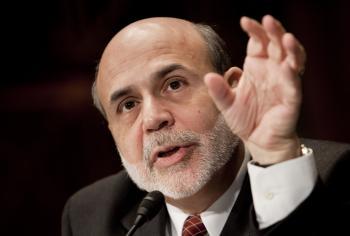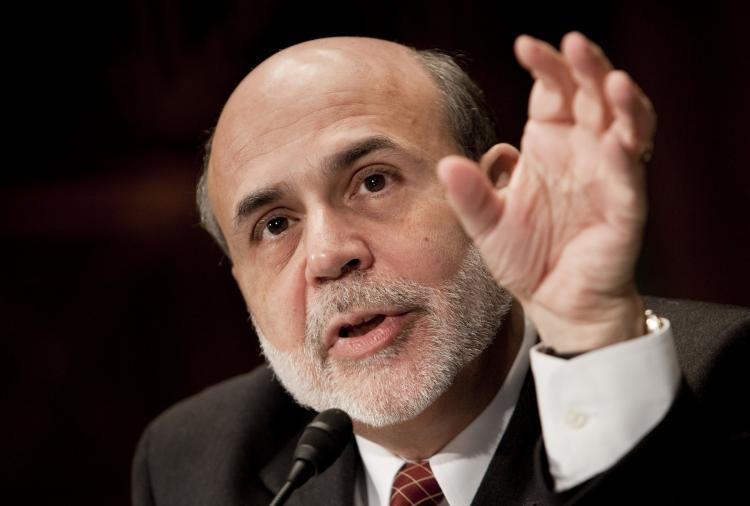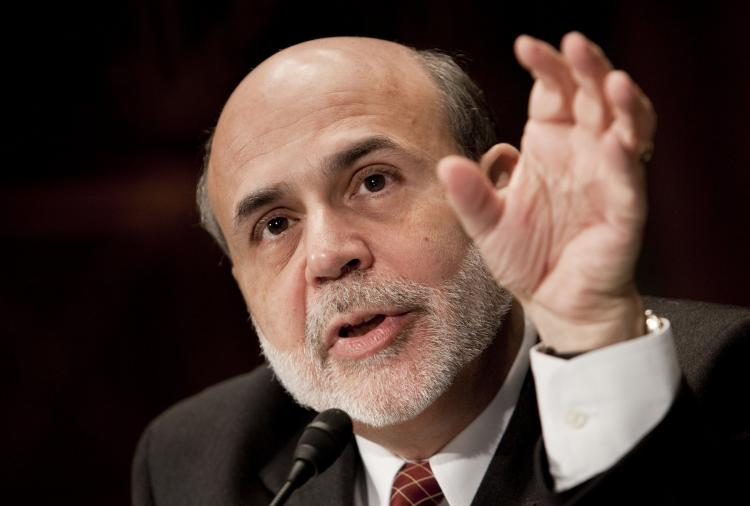The world’s top bank regulators agreed on sweeping new rules for the global banking industry this week, following a year of negotiations, in the form of “Basel III” which will require banks to hold far more capital to prevent financial disaster.
The Basel Committee on Banking Supervision, which includes finance ministers from 27 countries including the United States’ Ben S. Bernanke, reached an accord that requires banks to hold equity—Tier 1 capital—in the amount of 6 percent of total assets, up from the current requirement of 2 percent. {etRelated 42476, 42244”
In addition, banks must reserve an additional capital conservation buffer of 2.5 percent of total assets to withstand future periods of stress in the global economy, bringing the total amount of capital needed to 8.5 percent.
The new measures hope to serve as a regulatory guide for national regulators in monitoring the health of banks. The current “Basel II” rules, as we’ve seen during the financial crisis of 2008, failed to ensure that banks held adequate capital in the event of financial disaster.
In March 2008, investment bank Bear Stearns Cos. collapsed due to liquidity issues and was hastily sold off to JPMorgan Chase & Co., and later in September, banking giant Lehman Brothers Holdings Inc. declared bankruptcy, becoming the biggest U.S. corporate bankruptcy in history.
“The agreements reached today are a fundamental strengthening of global capital standards,” said Jean-Claude Trichet, president of the European Central Bank, in a statement on Sunday.
“Their contribution to long-term financial stability and growth will be substantial.”
The “Basel III” accord, derived from the city in Switzerland where the Committee is headquartered, will be ratified by the Group of 20 nations later this year.
The agreement “sets the stage for key regulatory changes to strengthen the capital and liquidity of internationally active banking organizations in the United States and around the world,” said a U.S. Federal Reserve and Treasury Department joint-statement.
“The transition though is the critical bit as the rules suck money out of the economy,” opined the British Bankers’ Association (BBA), which publishes the LIBOR interest rates, in a statement on Monday. “Even though the UK banks are in a much stronger place than most on capital, the Basel changes need to be implemented over a long timetable and very carefully sequenced to avoid prolonging the downturn.”
“A bank is like any other business—if its fixed operating costs go up then so does the price of its product. All the changes are good from a stability perspective but add billions to the fixed operating cost of a bank.”
As a result, BBA thinks that more stringent regulations could force banks to charge more for their products and raise interest rates on loans and other borrowings in order to pass on the higher cost of running the business.
Despite opposition from the industry, banks will have a long time to implement these measures.
In a research note, Barclays Capital analysts called the “Basel III” rules’ implementation timeline as “more generous than expected,” easing some banks’ concern that its implementation would be onerous on the financial sector.
The capital requirement “is lower than some had feared, and the phase-in timings to fix balance sheets appears generous. Given the recent buffeting experienced by the sector, sentiment should be helped by the greater clarity around what different banks need to do,” Barclays said.
According to a Wall Street Journal blog, some analysts believe that banks would now have more money to invest in the economy and lend out to customers, as the “Basel III” requirements came out to be less stringent than originally feared. This allows many major banks which have been hoarding cash to instead spend the money or return the capital to shareholders.
The Basel Committee on Banking Supervision, which includes finance ministers from 27 countries including the United States’ Ben S. Bernanke, reached an accord that requires banks to hold equity—Tier 1 capital—in the amount of 6 percent of total assets, up from the current requirement of 2 percent. {etRelated 42476, 42244”
In addition, banks must reserve an additional capital conservation buffer of 2.5 percent of total assets to withstand future periods of stress in the global economy, bringing the total amount of capital needed to 8.5 percent.
The new measures hope to serve as a regulatory guide for national regulators in monitoring the health of banks. The current “Basel II” rules, as we’ve seen during the financial crisis of 2008, failed to ensure that banks held adequate capital in the event of financial disaster.
In March 2008, investment bank Bear Stearns Cos. collapsed due to liquidity issues and was hastily sold off to JPMorgan Chase & Co., and later in September, banking giant Lehman Brothers Holdings Inc. declared bankruptcy, becoming the biggest U.S. corporate bankruptcy in history.
“The agreements reached today are a fundamental strengthening of global capital standards,” said Jean-Claude Trichet, president of the European Central Bank, in a statement on Sunday.
“Their contribution to long-term financial stability and growth will be substantial.”
The “Basel III” accord, derived from the city in Switzerland where the Committee is headquartered, will be ratified by the Group of 20 nations later this year.
The agreement “sets the stage for key regulatory changes to strengthen the capital and liquidity of internationally active banking organizations in the United States and around the world,” said a U.S. Federal Reserve and Treasury Department joint-statement.
Effect Uncertain
Banking organizations around the world have had mixed reactions on the new regulations. Some applaud the measure as necessary for the long-term stability of the financial markets, while others questioned whether it was overkill.“The transition though is the critical bit as the rules suck money out of the economy,” opined the British Bankers’ Association (BBA), which publishes the LIBOR interest rates, in a statement on Monday. “Even though the UK banks are in a much stronger place than most on capital, the Basel changes need to be implemented over a long timetable and very carefully sequenced to avoid prolonging the downturn.”
“A bank is like any other business—if its fixed operating costs go up then so does the price of its product. All the changes are good from a stability perspective but add billions to the fixed operating cost of a bank.”
As a result, BBA thinks that more stringent regulations could force banks to charge more for their products and raise interest rates on loans and other borrowings in order to pass on the higher cost of running the business.
Despite opposition from the industry, banks will have a long time to implement these measures.
Banks Cheer Timeline
The new capital conservation buffer of 2.5 percent, a key component of the deal, will not be fully in place until 2019—by which time the current Wall Street regulatory fervor could have subsided, analysts say.In a research note, Barclays Capital analysts called the “Basel III” rules’ implementation timeline as “more generous than expected,” easing some banks’ concern that its implementation would be onerous on the financial sector.
The capital requirement “is lower than some had feared, and the phase-in timings to fix balance sheets appears generous. Given the recent buffeting experienced by the sector, sentiment should be helped by the greater clarity around what different banks need to do,” Barclays said.
According to a Wall Street Journal blog, some analysts believe that banks would now have more money to invest in the economy and lend out to customers, as the “Basel III” requirements came out to be less stringent than originally feared. This allows many major banks which have been hoarding cash to instead spend the money or return the capital to shareholders.






